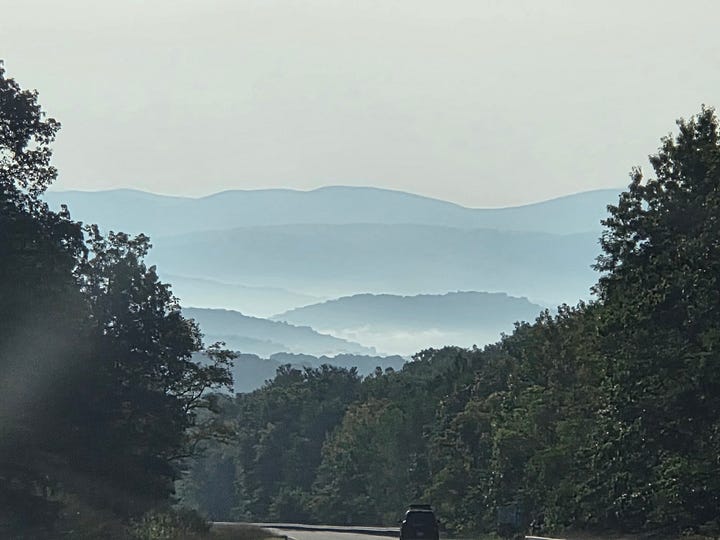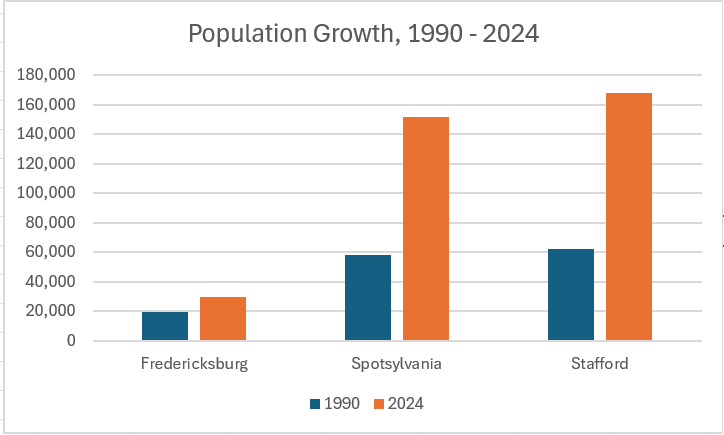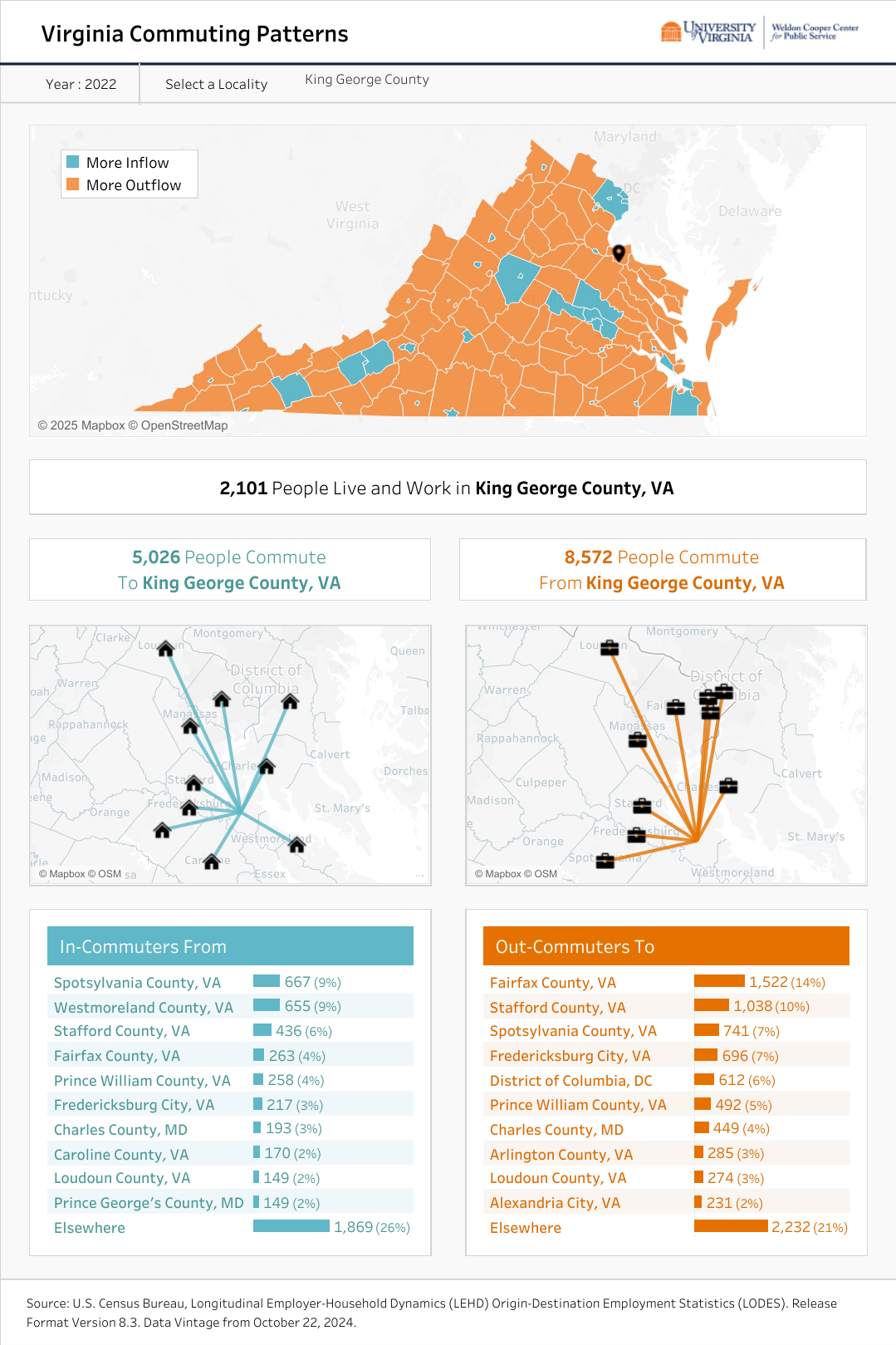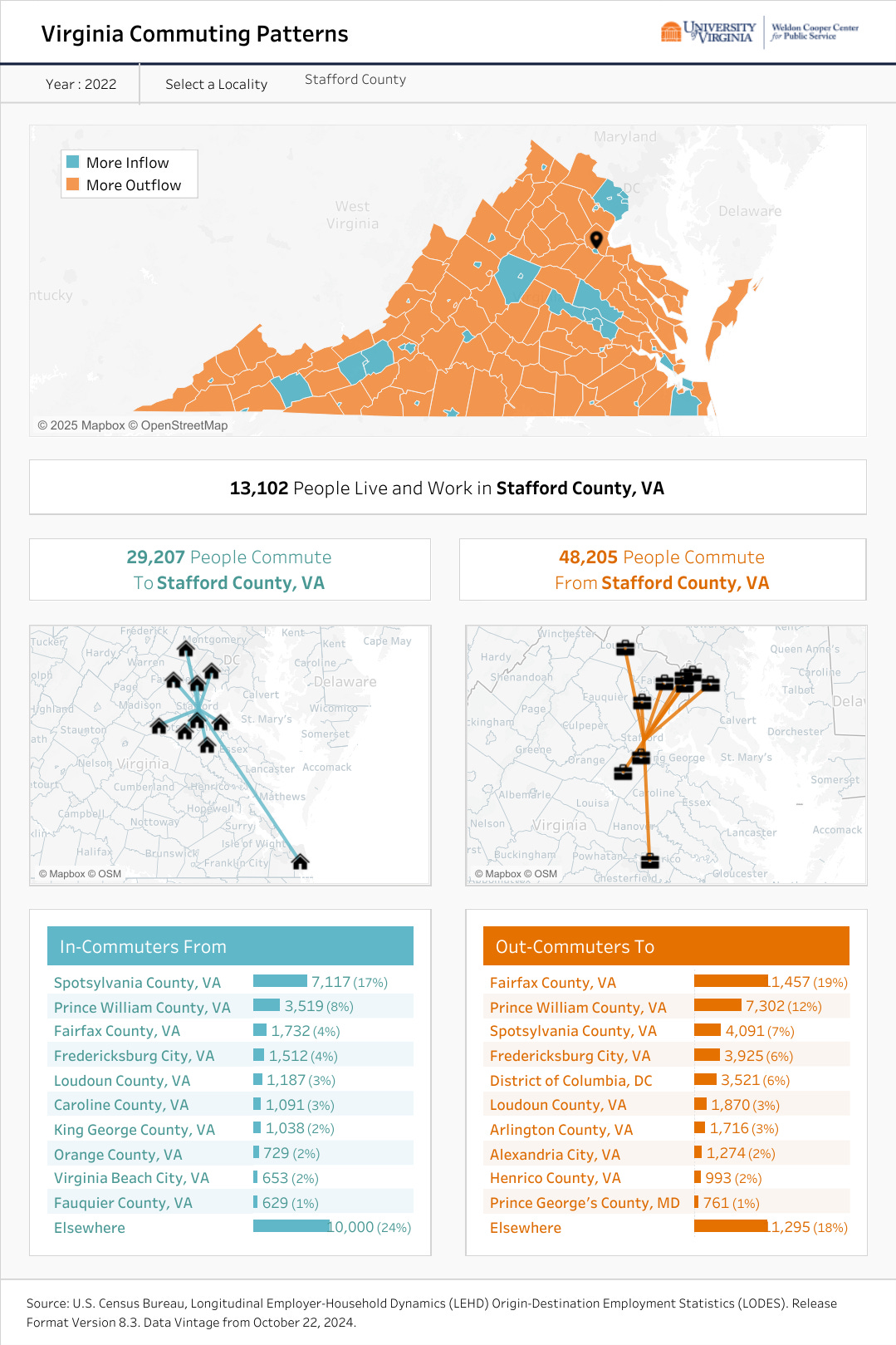FROM THE EDITOR: Open Space, City Growth, and the Danger of Scarcity Thinking
The greater Fredericksburg region has been made vital and attractive by welcoming people. Scarcity thinking threatens to undermine that.
By Martin Davis
EDITOR-IN-CHIEF
Email Martin


John Madden — an NFL Hall of Fame coach — famously grounded himself during his broadcasting career. Overcome with a fear of flying, he swore off planes for a bus and took the slow road week-by-week across the county to wherever next Sunday’s assignment took him.
This week I got a taste of Madden’s life, when instead of flying to St. Louis for a meeting, I drove the 800 miles from Fredericksburg to the Gateway Arch. It’s a journey more of us would benefit from taking.
Not because driving is easier than flying — it isn’t. Rather, it’s an opportunity to gain perspective on how expansive our state, and the country as a whole, is.
That perspective is important in communities where growth is rapid, and challenges are mounting.
Growth and the Scarcity Mindset
Fredericksburg, Spotsylvania, and Stafford have realized unprecedented growth over the past 30 years.
And all three localities are facing the challenges that growth brings: The need to grow infrastructure, to provide housing, to build schools and educate children, to care for those unable to care for themselves, and to deliver healthcare to those dealing with sickness as well as those who are bringing the next generations into the world.
It’s these challenges that can lead people to focus not on the opportunity and horizons in front of them, but to focus on what’s right before them and dig in to defend it. That focus on protecting what is known, without seeing the horizon, gives rise to the scarcity mindset.
In Spotsylvania and Stafford counties, for example, as populations soar, concerns about losing the counties’ rural characters are common. The open spaces that people are accustomed to seeing begin to feel scarce as housing, roads, data centers, and more come online.
In Fredericksburg, the feeling of scarcity emerges when people see diminishing historical assets as denser housing and more people threaten what some see as the city’s small-town, walkable character. This feeling of scarcity is regularly below the surface and bubbles up when development projects are introduced.
What Drives Growth
This is not to be dismissive of citizens’ sense of scarcity. There is value in understanding what is worth protecting. Rather, it’s to caution against allowing scarcity to become what drives people’s thinking and planning. When that happens, we lose perspective about what makes a locality vibrant.
A July study by the Weldon Cooper Center — like a drive across the country — can help us to appreciate the assets and horizons before us by allowing us to gain perspective on what drives our local vibrancy.
And it does this by studying what many of us curse — commuting.
The study, Visualizing Virginia's Commute, uses data about in-commuters and out-commuters to localities to better understand “how people access jobs, how regions are linked economically, and where transportation and housing investments might be needed.”
Analyzing the balance between in- and out-commuters, the Weldon Cooper Center created four typologies in which to place each locality’s commuting profile.
Of the five localities in the Diamond, one is identified as Bedroom, one as Self-contained, and three as Regional Crossroads.
Caroline County — Bedroom
Caroline County has one of the highest out-commuter ratios in Virginia (No. 5, according to the study). With very few people commuting in, Caroline is a classic bedroom community.
Why are people settling there? Most likely, housing costs. The recently released “Central Virginia Housing Policy Landscape Report” (CVHPLR) shows that while housing costs for the county are up 51% since 2019, the average cost of a home in Caroline ($334,548) is the lowest in the Diamond region.
Further, the county is leaning into what’s attracting people to the region. The CVHPLR shows the county’s housing stock up 192% since 2019.
Fredericksburg — Regional Crossroads
With both in-commuters and out-commuters above average for the state, Fredericksburg is considered a regional crossroads.
According to Weldon Cooper Center, regional crossroads “serve as both residential and employment hubs.”
Fredericksburg’s status as a crossroads, however, faces its greatest threat from a diminishing housing supply. The Central Virginia Housing report shows the city’s housing stock down 86% since 2019. That’s the single largest drop in our region. (Statewide, housing stock is up 5% overall.)
Leaning into creating more housing, and more-affordable housing, will strengthen the city’s place as a critical locality for business growth.
King George — Regional Crossroad
Like Fredericksburg, King George is also classified as a regional crossroad. However, unlike Fredericksburg, King George’s in-commuter base is mostly due to one entity — Dahlgreen. If federal job cuts begin to affect that establishment, King George could end up being a bedroom community. The county, however, is poorly positioned for this, with pressing water issues, and flat housing stock growth since 2019, according to the CVHPLR report.
Spotsylvania — Self-contained
Spotsylvania is the only locality in our readership area identified as self-contained, which the Weldon Cooper Center defines as a locality with the “lowest commuting flows in both directions, with many residents working locally. However, even among these counties, a majority of residents commute elsewhere.”
The county, therefore, functions both as a bedroom type community — especially in the northern third of the county — and a more-rural locality, like Fauquier.
Which way Spotsylvania goes depends in part on how seriously it takes the challenge of welcoming and providing for new people.
Housing stock in Spotsylvania is down 46% since 2019 according to the Central Virginia Housing study, with prices up 24%. It’s not unreasonable to conclude that many who in the past may have come to Spotsylvania because of affordable housing costs are now heading to Caroline.
While growth isn’t going to stop, Caroline could well benefit if Spotsylvania doesn’t find a way to make itself more affordable for working-class families.
Stafford — Regional Crossroad
Stafford may well be the most-complex locality in our region, and the most economically robust. It also, like Fredericksburg, has an Achilles heel — housing.
According the CVHPLR report, not only does Stafford have the highest average home price in the area, it has also seen one of the steepest declines since 2019 in housing stock — down 60%.
Standing at the Crossroads
Our region over the past 30 years has become one of the most diverse, dynamic, and attractive in Virginia because it has made people welcome with relatively affordable home prices, and grown business opportunities that both allow people to work closer to home and attract people from outside the area.
A rise in scarcity thinking, however, threatens to undermine what has made this area attractive and grow.
We need not abandon scarcity thinking. It has value. There are things worth preserving, and we should exercise due diligence before diving in to every opportunity before us.
But we need to gain some perspective on the robustness that has brought us to this point.
People, and the policies that attract them, are a net positive, and they are our future.
Fear of growth, an unwillingness to create housing for all, and resistance to businesses that spark more growth and diversify our economies is a threat to our viability 30 years hence.
Local Obituaries
To view local obituaries or to send a note to family and loved ones, please visit the link that follows.
Support Award-winning, Locally Focused Journalism
The FXBG Advance cuts through the talking points to deliver both incisive and informative news about the issues, people, and organizations that daily affect your life. And we do it in a multi-partisan format that has no equal in this region. Over the past year, our reporting was:
First to break the story of Stafford Board of Supervisors dismissing a citizen library board member for “misconduct,” without informing the citizen or explaining what the person allegedly did wrong.
First to explain falling water levels in the Rappahannock Canal.
First to detail controversial traffic numbers submitted by Stafford staff on the Buc-ee’s project
Our media group also offers the most-extensive election coverage in the region and regular columnists like:
And our newsroom is led by the most-experienced and most-awarded journalists in the region — Adele Uphaus (Managing Editor and multiple VPA award-winner) and Martin Davis (Editor-in-Chief, 2022 Opinion Writer of the Year in Virginia and more than 25 years reporting from around the country and the world).
For just $8 a month, you can help support top-flight journalism that puts people over policies.
Your contributions 100% support our journalists.
Help us as we continue to grow!
This article is published under Creative Commons license CC BY-NC-ND. It can be distributed for noncommercial purposes and must include the following: “Published with permission by FXBG Advance.”




















Dahlgren not Dahlgreen.